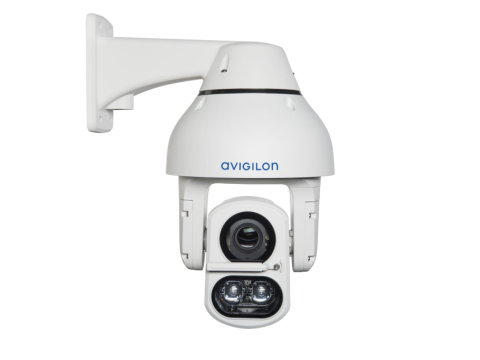What is a PTZ Camera?
PTZ (Pan-Tilt-Zoom) cameras are advanced surveillance devices designed to provide dynamic monitoring capabilities. The acronym represents three core functionalities:
- Pan: Rotates the camera horizontally.
- Tilt: Adjusts the vertical angle.
- Zoom: Alters the focal length to enlarge or reduce the view.
How Does a PTZ Camera Work?
PTZ cameras feature motorized platforms that enable movement in horizontal and vertical planes, providing up to 360° horizontal rotation and 90° vertical tilt. This flexibility eliminates blind spots (except those created by obstacles).
Key functionalities include:
- Zoom Capability: PTZ cameras often feature high-magnification lenses, such as 20x or more, for detailed viewing.
- Control Protocols: Modern PTZ cameras use technologies like AHD, TVI, CVI (often referred to as analog) or IP for network integration.
Features of PTZ Cameras
Customizable Surveillance:
- Pre-configured to focus on specific zones or follow moving objects using motion detection.
- Automatic panning or manual operator control for flexible monitoring.
High-Speed Rotation:
- Rotation speeds are measured in degrees per second, ensuring fast tracking.
Video Analytics:
- Advanced models include video analytics to enhance object detection and tracking.
Integrated Power Supply:
- Many PTZ cameras support Power-over-Ethernet (PoE) for streamlined setup.
Versatility:
- Useful for open spaces like parking lots, stadiums, and warehouses, or large indoor areas like malls and airports.
Installation Tips for PTZ Cameras
Mounting Considerations:
- PTZ cameras are typically heavy (up to 22 lbs or 10 kg) and require strong mounting points.
- Install on rigid surfaces to minimize vibration during operation.
Environmental Factors:
- Account for wind and temperature variations when installing outdoor PTZ cameras.
- Use weatherproof and climate-controlled housings in extreme conditions.
Power and Signal Requirements:
- Ensure adequate power supply to handle the camera's current draw (several amps).
- Check voltage drop across long power lines.
Control Systems:
- Choose from joystick controllers, DVR interfaces, or software solutions for seamless operation.
Applications of PTZ Cameras
Security Monitoring:
Ideal for dynamic tracking in security-sensitive areas.Public Events:
Used in concerts, sports events, and conferences for live tracking.Corporate and Commercial Use:
PTZ cameras enhance video conferencing and meeting setups by focusing on individual speakers.
Conclusion
PTZ cameras combine advanced mobility with high zoom capabilities, making them invaluable for surveillance and monitoring large areas. Their adaptability and robust features justify the investment for high-security applications. Proper installation and configuration by professionals ensure optimal performance and longevity.

